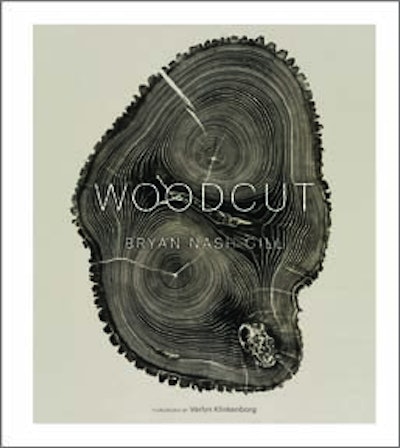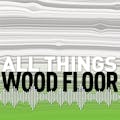
 |

Nash's book, published by Princeton Architectural Press, is available now. Some of the wood Gill finds on his farm in Connecticut, while friends bring him other pieces, and still more he finds along the side of the road. He cuts a cross section from the wood and sands it flat using sandpaper ranging from 36 grit to 200, depending on the species and how tight the grain is. Then he reduces the wood's softer springwood by burning it with a blowtorch or digging it out with a razor blade; he's determined that grinding it out with a Dremel results in lines that are "too sterile for me." After that he seals the surface with shellac, which "protects the information on the block." After the block is ready, Gill goes to printing. He applies carefully selected ink to the wood block, and then he presses paper to the wood using his fingers or a spoon.

Gill learned to experiment with his process. Take "Leader," which was made with ash and printed onto cloth instead of paper. Gill also tinkered with his ink here, combining a custom batch with solvents, which resulted in an image with a soft, three-dimensional quality. For a few pieces, Gill "bookmatches" his print, "in which a cut is opened, like a book, to reveal both sides in almost mirror image to each other." The result is a mirrored print where one side is just a little different from the other.

Some of the images are more stark, however. "Pipe Rot," made from a block Gill found at a local mill, has a hole in the middle where its heartwood used to be. This particular tree experienced a trauma early in its life, which caused the rings to separate. Anyone looking for traumatic symbolism in nature need look no further.
In the future, Gill dreams of making a print using an entire tree-"not a massive tree," though. He would take it apart, recreate it, and then take its print. "Perhaps I'm in the business of memorializing trees," he writes.




















